Immunology/Inflammation
The immune and inflammation-related pathway including the Toll-like receptors pathway, the B cell receptor signaling pathway, the T cell receptor signaling pathway, etc.
Toll-like receptors (TLRs) play a central role in host cell recognition and responses to microbial pathogens. TLR4 initially recruits TIRAP and MyD88. MyD88 then recruits IRAKs, TRAF6, and the TAK1 complex, leading to early-stage activation of NF-κB and MAP kinases [1]. TLR4 is endocytosed and delivered to intracellular vesicles and forms a complex with TRAM and TRIF, which then recruits TRAF3 and the protein kinases TBK1 and IKKi. TBK1 and IKKi catalyze the phosphorylation of IRF3, leading to the expression of type I IFN [2].
BCR signaling is initiated through ligation of mIg under conditions that induce phosphorylation of the ITAMs in CD79, leading to the activation of Syk. Once Syk is activated, the BCR signal is transmitted via a series of proteins associated with the adaptor protein B-cell linker (Blnk, SLP-65). Blnk binds CD79a via non-ITAM tyrosines and is phosphorylated by Syk. Phospho-Blnk acts as a scaffold for the assembly of the other components, including Bruton’s tyrosine kinase (Btk), Vav 1, and phospholipase C-gamma 2 (PLCγ2) [3]. Following the assembly of the BCR-signalosome, GRB2 binds and activates the Ras-guanine exchange factor SOS, which in turn activates the small GTPase RAS. The original RAS signal is transmitted and amplified through the mitogen-activated protein kinase (MAPK) pathway, which including the serine/threonine-specific protein kinase RAF followed by MEK and extracellular signal related kinases ERK 1 and 2 [4]. After stimulation of BCR, CD19 is phosphorylated by Lyn. Phosphorylated CD19 activates PI3K by binding to the p85 subunit of PI3K and produce phosphatidylinositol-3,4,5-trisphosphate (PIP3) from PIP2, and PIP3 transmits signals downstream [5].
Central process of T cells responding to specific antigens is the binding of the T-cell receptor (TCR) to specific peptides bound to the major histocompatibility complex which expressed on antigen-presenting cells (APCs). Once TCR connected with its ligand, the ζ-chain–associated protein kinase 70 molecules (Zap-70) are recruited to the TCR-CD3 site and activated, resulting in an initiation of several signaling cascades. Once stimulation, Zap-70 forms complexes with several molecules including SLP-76; and a sequential protein kinase cascade is initiated, consisting of MAP kinase kinase kinase (MAP3K), MAP kinase kinase (MAPKK), and MAP kinase (MAPK) [6]. Two MAPK kinases, MKK4 and MKK7, have been reported to be the primary activators of JNK. MKK3, MKK4, and MKK6 are activators of P38 MAP kinase [7]. MAP kinase pathways are major pathways induced by TCR stimulation, and they play a key role in T-cell responses.
Phosphoinositide 3-kinase (PI3K) binds to the cytosolic domain of CD28, leading to conversion of PIP2 to PIP3, activation of PKB (Akt) and phosphoinositide-dependent kinase 1 (PDK1), and subsequent signaling transduction [8].
References
[1] Kawai T, Akira S. The role of pattern-recognition receptors in innate immunity: update on Toll-like receptors[J]. Nature immunology, 2010, 11(5): 373-384.
[2] Kawai T, Akira S. Toll-like receptors and their crosstalk with other innate receptors in infection and immunity[J]. Immunity, 2011, 34(5): 637-650.
[3] Packard T A, Cambier J C. B lymphocyte antigen receptor signaling: initiation, amplification, and regulation[J]. F1000Prime Rep, 2013, 5(40.10): 12703.
[4] Zhong Y, Byrd J C, Dubovsky J A. The B-cell receptor pathway: a critical component of healthy and malignant immune biology[C]//Seminars in hematology. WB Saunders, 2014, 51(3): 206-218.
[5] Baba Y, Matsumoto M, Kurosaki T. Calcium signaling in B cells: regulation of cytosolic Ca 2+ increase and its sensor molecules, STIM1 and STIM2[J]. Molecular immunology, 2014, 62(2): 339-343.
[6] Adachi K, Davis M M. T-cell receptor ligation induces distinct signaling pathways in naive vs. antigen-experienced T cells[J]. Proceedings of the National Academy of Sciences, 2011, 108(4): 1549-1554.
[7] Rincón M, Flavell R A, Davis R A. The Jnk and P38 MAP kinase signaling pathways in T cell–mediated immune responses[J]. Free Radical Biology and Medicine, 2000, 28(9): 1328-1337.
[8] Bashour K T, Gondarenko A, Chen H, et al. CD28 and CD3 have complementary roles in T-cell traction forces[J]. Proceedings of the National Academy of Sciences, 2014, 111(6): 2241-2246.
Targets for Immunology/Inflammation
- Apoptosis(303)
- 5-Lipoxygenase(18)
- Cyclic GMP-AMP Synthase(2)
- TLR(98)
- Papain(1)
- PGDS(1)
- PGE synthase(24)
- SIKs(10)
- IκB/IKK(62)
- AP-1(3)
- KEAP1-Nrf2(42)
- NOD1(1)
- NF-κB(240)
- Interleukin Related(147)
- 15-lipoxygenase(2)
- Others(10)
- Aryl Hydrocarbon Receptor(33)
- CD73(16)
- Complement System(52)
- Galectin(31)
- IFNAR(21)
- NO Synthase(75)
- NOD-like Receptor (NLR)(46)
- STING(101)
- Reactive Oxygen Species(446)
- FKBP(11)
- eNOS(5)
- iNOS(28)
- nNOS(20)
- Glutathione(54)
- Adaptive Immunity(216)
- Allergy(161)
- Arthritis(32)
- Autoimmunity(185)
- Gastric Disease(96)
- Immunosuppressants(37)
- Immunotherapeutics(5)
- Innate Immunity(579)
- Pulmonary Diseases(119)
- Reactive Nitrogen Species(54)
- Specialized Pro-Resolving Mediators(50)
- Reactive Sulfur Species(26)
- BCL6(0)
- CD20(0)
- CD22(0)
- CD28(0)
- PSMA(0)
- FAP(0)
Products for Immunology/Inflammation
- Cat.No. Nom du produit Informations
-
GC50569
NLRP3-IN-2
Le NLRP3-IN-2, substrat intermédiaire dans la synthèse du glyburide, inhibe la formation de l'inflammasome NLRP3 dans les cardiomyocytes et limite la taille de l'infarctus après ischémie/reperfusion myocardique chez la souris, sans affecter le métabolisme du glucose .

-
GC45194
α-(difluoromethyl)-DL-Arginine
DFMA, RMI 71897
Bacteria synthesize the cellular growth factor putrescine through a number of pathways.

-
GC65446
α-Amyrin acetate
α-L'acétate d'amyrine, un triterpénoïde naturel, a une activité anti-inflammatoire, un profil antispasmodique et un effet relaxant.
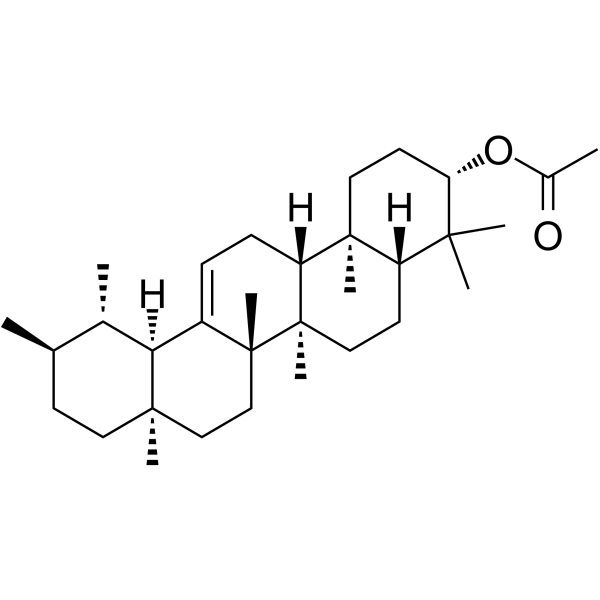
-
GC49838
α-Cortolone
20α-Cortolone, NSC 59872
A metabolite of cortisol
-
GC48279
α-D-Glucose-1-phosphate (sodium salt hydrate)
α-D-Glc 1-P
An intermediate in glycogen metabolism
-
GC52253
α-Enolase (1-19)-biotin Peptide
Enolase-1 (1-19)-biotin
A biotinylated α-enolase peptide
-
GC45206
α-GalCer analog 8
α-Galactosylceramide analog 8
α-Galactosylceramide analog 8 (α-GalCer analog 8) is a triazole derivative of α-galactosylceramide.

-
GC40262
α-Humulene
αCaryophyllene, (±)-αHumulene
α-L'humulène est un constituant principal de Tanacetum vulgare L.
-
GC45601
α-Linolenic Acid ethyl ester-d5
ALAEE-d5, Ethyl α-Linolenate-d5, Ethyl Linolenate-d5, LAEE-d5, Linolenic Acid ethyl ester-d5

-
GC48292
α-MSH (human, mouse, rat, porcine, bovine, ovine) (trifluoroacetate salt)
α-Melanocyte-stimulating Hormone, Ac-SYSMEHFRWGKPV-NH2
α-MSH (α-Melanocyte-Stimulating Hormone) TFA, un neuropeptide endogène, est un agoniste endogène du récepteur 4 de la mélanocortine (MC4R) avec des activités anti-inflammatoires et antipyrétiques.
-
GC41499
α-Phellandrene
p-Mentha-1,5-diene, (±)-α-Phellandrene
α-Phellandrene is a cyclic monoterpene that has been found in various plants, including Cannabis, and has diverse biological activities.
-
GC63941
α-Solanine
Il a été observé que la α-solanine, un composant bioactif et l'un des principaux glycoalcaloÏdes stéroÏdiens de la pomme de terre, inhibe la croissance et induit l'apoptose des cellules cancéreuses.
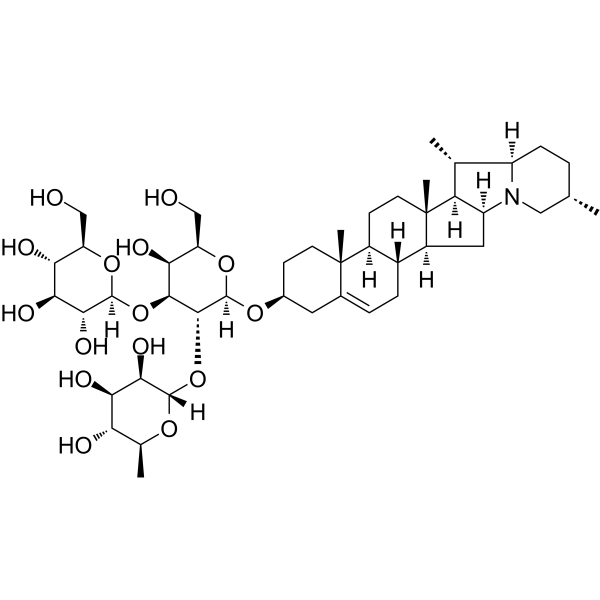
-
GC67618
α-Tocopherol phosphate disodium
alpha-Tocopherol phosphate disodium; TocP disodium; Vitamin E phosphate disodium
α-Le phosphate de tocophérol (phosphate d'alpha-tocophérol) disodique, un antioxydant prometteur, peut protéger contre la mort cellulaire induite par les UVA1 à ondes longues et piéger les ROS induites par les UVA1 dans un modèle de cellule cutanée. α ; - Le phosphate de tocophérol disodique possède un potentiel thérapeutique dans l'inhibition de l'apoptose et augmente la capacité migratoire des cellules progénitrices endothéliales dans des conditions de glucose élevé/hypoxique et favorise l'angiogenèse.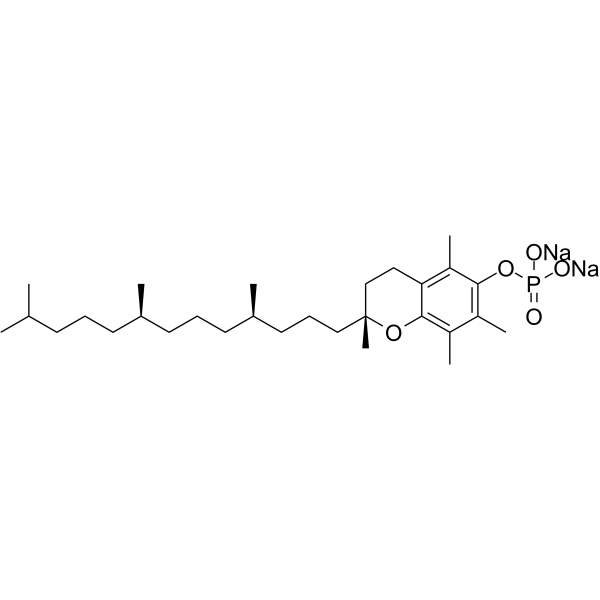
-
GC70953
α7 nAchR-JAK2-STAT3 agonist 1
α7 nAchR-JAK2-STAT3 agonist 1 est un puissant agoniste α7 nAchR-JAK2-STAT3, avec une valeur ci50 de 0,32 μM pour l’oxyde nitrique (NO).

-
GC49467
β-Aescin
A triterpenoid saponin with diverse biological activities

-
GC70787
β-Aminoarteether
β-Aminoarteether(sm934 base libre) est un dérivé de l'artémisinine à activité orale.

-
GC37999
β-Anhydroicaritin
β-L'anhydroicaritine est isolée de Boswellia carterii Birdware, a d'importants effets biologiques et pharmacologiques, tels que l'antiostéoporose, la régulation des œstrogènes et les propriétés antitumorales.
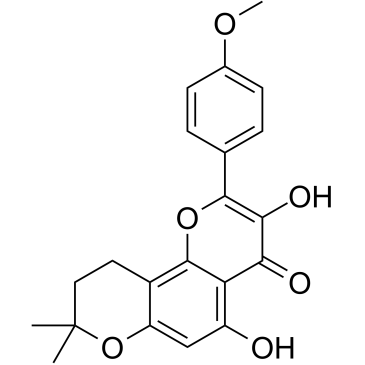
-
GC45225
β-Apooxytetracycline
β-Apo-Oxytetracycline, β-Apoterramycin
β-Apooxytetracycline is a potential impurity found in commercial preparations of oxytetracycline.
-
GC48920
β-Carboline-1-carboxylic Acid
1-Formic Acid-β-carboline
An alkaloid with diverse biological activities
-
GC66870
β-D-Glucan
β-D-glucane est un polysaccharide naturel non digestible et à haute biocompatibilité qui peut être sélectivement reconnu par les récepteurs de reconnaissance tels que les récepteurs Dectin-1 et Toll-like et être facilement internalisé par les macrophages murins ou humains, ce qui est susceptible de attribut à une diffusion cible. &88888946;-d-glucan est un véhicule de livraison entérique pour les probiotiques.
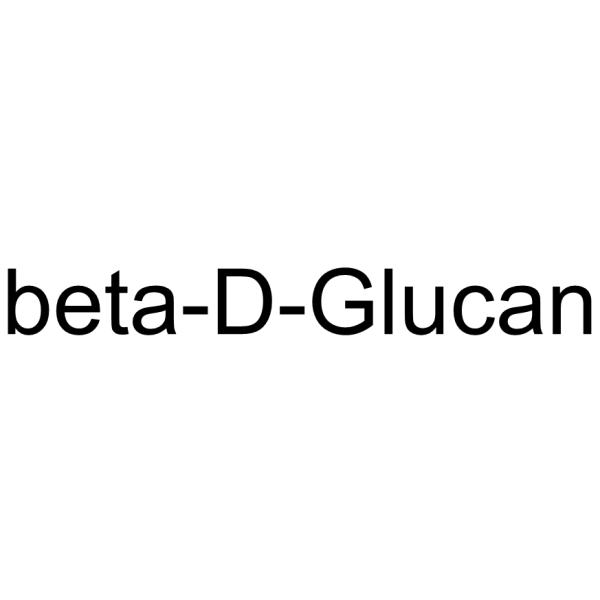
-
GC48998
β-Defensin-1 (human) (trifluoroacetate salt)
hBD-1
An antimicrobial peptide
-
GC48298
β-Defensin-2 (human) (trifluoroacetate salt)
hBD-2
An antimicrobial peptide
-
GC45230
β-Defensin-3 (human) (trifluoroacetate salt)
hBD-3
β-Defensin-3 is a peptide with antimicrobial properties that protects the skin and mucosal membranes of the respiratory, genitourinary, and gastrointestinal tracts.
-
GC45231
β-Defensin-4 (human) (trifluoroacetate salt)
hBD-4 (human)
β-Defensin-4 is a peptide with antimicrobial properties that protects the skin and mucosal membranes of the respiratory, genitourinary, and gastrointestinal tracts.
-
GC41623
β-Elemonic Acid
Elemadienonic Acid, 3-Oxotirucallenoic Acid, 3-oxo Tirucallic Acid
β ; - L'acide élémonique est un triterpène isolé de Boswellia papyrifera.
-
GC49769
β-Glucogallin
1-O-Galloyl-β-D-glucose
A plant metabolite and an aldose reductase 2 inhibitor
-
GC64619
β-Ionone
β-Ionone est efficace dans l'induction de l'apoptose dans les cellules d'adénocarcinome gastrique SGC7901. Activité anticancéreuse.
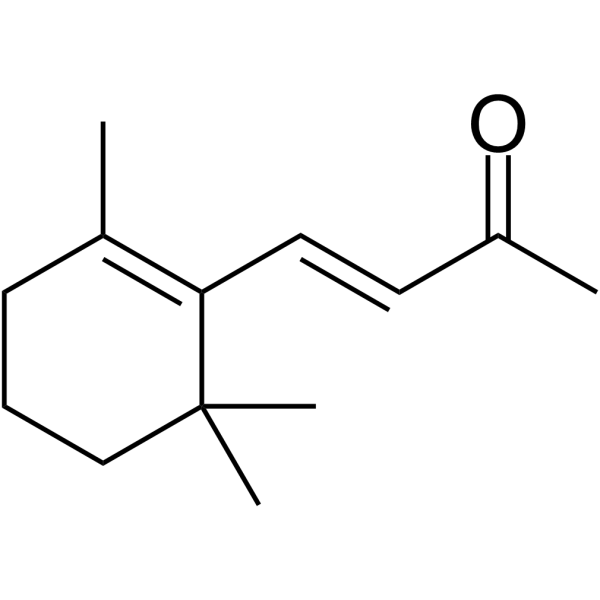
-
GC41502
β-Myrcene
NSC 406264
β-Myrcène (β-β-Myrcène), un composé volatil aromatique, supprime l'activité NF-κB induite par le TNFα.
-
GC72061
β-Phellandrene
β-Phellandrene obtenu à partir d'os de roche.

-
GC45604
β-Rubromycin
β ; - La rubromycine est un inhibiteur puissant et sélectif de l'ADN polymére dirigé par l'ARN du virus de l'immunodéficience humaine-1 (VIH-1) (transcriptase inverse).

-
GC52400
γ-Glu-Ala (trifluoroacetate salt)
γ-Glutamylalanine, γ-L-Glutamyl-L-alanine
A dipeptide
-
GC48312
γ-Glu-Cys (ammonium salt)
γ-Glutamylcysteine
An intermediate in GSH synthesis
-
GC45238
δ14-Triamcinolone acetonide
14,15-dehydro Triamcinolone acetonide, Triamcinolone acetonide Impurity B
δ14-Triamcinolone acetonide is a potential impurity found in commercial preparations of triamcinolone acetonide.
-
GC40307
δ2-cis-Hexadecenoic Acid
One of the first organisms in which quorum sensing was observed were Myxobacteria, a group of gram-negative bacteria, found mainly in soil and also common to marine and freshwater systems.

-
GC41393
ω-3 Arachidonic Acid methyl ester
ω-3 Fatty acids, represented primarily by docosahexaenoic acid, eicosapentaenoic acid, and α-linoleate, are essential dietary nutrients required for normal growth and development.

-
GC45713
(±)-α-Tocopherol Acetate
all-rac-α-Tocopherol Acetate, DL-α-Tocopherol Acetate, DL-Vitamin E acetate
(±)-α-acétate de tocophérol ((±)-acétate de vitamine E), est une forme synthétique active par voie orale de la vitamine E.
-
GC67191
(±)-α-Tocopherol nicotinate
(±)-α-Le nicotinate de tocophérol, vitamine E - nicotinate, est un antioxydant liposoluble actif par voie orale qui empêche la peroxydation des lipides dans les membranes cellulaires. (±)-α-le nicotinate de tocophérol est hydrolysé dans le sang en α -tocophérol et niacine et peuvent être utilisés dans des études de maladies vasculaires apparentées.
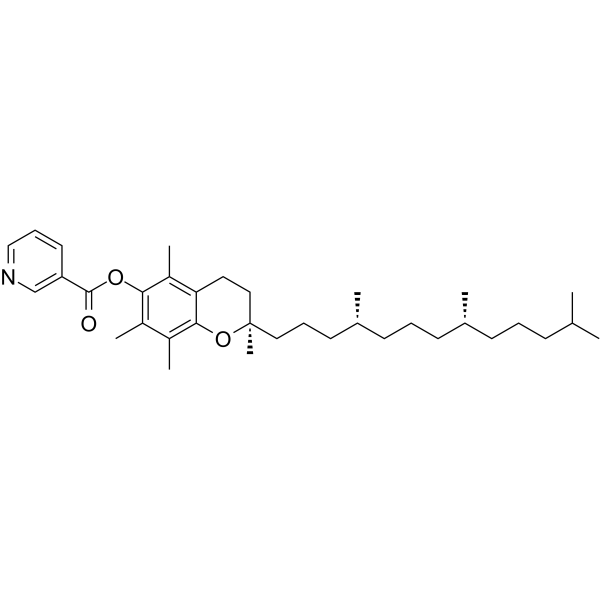
-
GC52010
(±)-10-hydroxy-12(Z),15(Z)-Octadecadienoic Acid
αHYA, (±)-10-hydroxy-12(Z),15(Z)-ODE
An oxylipin gut microbiota metabolite
-
GC52013
(±)-10-hydroxy-12(Z)-Octadecenoic Acid
10-hydroxy-cis-12-Octadecenoic Acid
An oxylipin and metabolite of linoleic acid
-
GC52421
(±)-10-hydroxy-12(Z)-Octadecenoic Acid-d5
10-hydroxy-cis-12-Octadecenoic Acid-d5
An internal standard for the quantification of (±)-10-hydroxy-12(Z)-octadecenoic acid
-
GC40112
(±)-Climbazole-d4
(±)-Climbazole-d4 is intended for use as an internal standard for the quantification of climbazole by GC- or LC-MS.

-
GC50708
(±)-ML 209
An RORγt antagonist
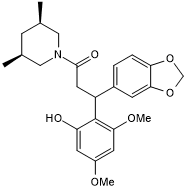
-
GC39271
(±)-Naringenin
SDihydrogenistein, NSC 11855, NSC 34875, Salipurol
(±)-La naringénine est un flavonoïde naturel.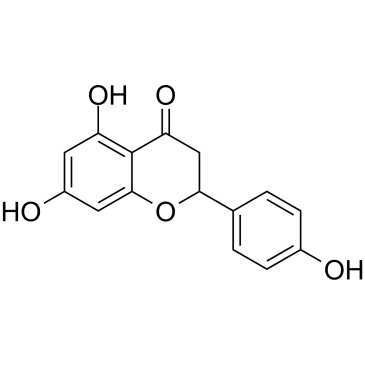
-
GC41212
(±)10(11)-EpDPA
(±)10,11-EDP, (±)10,11-EpDPE, (±)10,11-epoxy DPA, (±)10,11-epoxy Docosapentaenoic Acid
Cytochrome P450 metabolism of polyunsaturated fatty acids produces numerous bioactive epoxide regioisomers.
-
GC40466
(±)11(12)-EET
(±)11,12-EpETrE
(±)11(12)-EET est un inhibiteur de l'inflammasome NLRP3.
-
GC40467
(±)11-HETE
(±)11-Hydroxyeicosatetraenoic Acid
(±)11-HETE is one of the six monohydroxy fatty acids produced by the non-enzymatic oxidation of arachidonic acid.
-
GC40802
(±)12(13)-DiHOME
Isoleukotoxin diol
(±)12(13)-DiHOME is the diol form of (±)12(13)-EpOME, a cytochrome P450-derived epoxide of linoleic acid also known as isoleukotoxin.

-
GC41191
(±)13(14)-EpDPA
(±)13,14-EDP, (±)13,14-EpDPE, (±)13,14-epoxy DPA, (±)13,14-epoxy Docosapentaenoic Acid
(M)13(14)-EpDPA (13,14-EpDPE) est le produit de la réaction de la cytochrome P-450 époxygénase avec l'acide docosahexaénoïque (DHA).
-
GC40355
(±)13-HpODE
13-Hydroperoxylinoleic acid; Linoleic acid 13-hydroperoxide
(±)13-HpODE (acide 13-hydroperoxylinoléique) est un mélange racémique d'hydroperoxydes, qui est produit par l'oxydation de l'acide linoléique par la lipoxygénase.
-
GC41288
(±)17(18)-EpETE-Ethanolamide
17,18-EEQ-EA, (±)17,18-EEQ-Ethanolamide, (±)17(18)-EpETE-EA, 17,18-epoxy-Eicosatetraenoic Acid Ethanolamide
(±)17(18)-EpETE-Ethanolamide is an ω-3 endocannabinoid epoxide.
-
GC40362
(±)18-HEPE
(±)18-HEPE is produced by non-enzymatic oxidation of EPA.

-
GC41655
(±)19(20)-EDP Ethanolamide
19,20-DHEA epoxide, 19,20-epoxy Docosapentaenoic Acid Ethanolamide, 19,20-EDP-EA, 19,20-EDP epoxide
(±)19(20)-EDP ethanolamide is an ω-3 endocannabinoid epoxide and cannabinoid (CB) receptor agonist (EC50s = 108 and 280 nM for CB1 and CB2, respectively).
-
GC40270
(±)5(6)-DiHET
(±)5,6-DiHETrE
5(6)-DiHET is a fully racemic version of the enantiomeric forms biosynthesized from 5(6)-EET by epoxide hydrolases.

-
GC41203
(±)7(8)-EpDPA
(±)7,8-EDP, (±)7,8-EpDPE, (±)7,8-epoxy DPA, (±)7,8-epoxy Docosapentaenoic Acid
Docosahexaenoic acid is the most abundant ω-3 fatty acid in neural tissues, especially in the brain and retina.
-
GC40801
(±)9(10)-DiHOME
Leukotoxin diol
(±)9(10)-DiHOME est le racémate de 9,10-DiHOME.
-
GC46000
(•)-Drimenol
NSC 169775
A sesquiterpene alcohol
-
GC40809
(+)-β-Citronellol
(R)-Citronellol, (+)-Citronellol, (+)-(R)-Citronellol, (R)-(+)-β-Citronellol
(+)-β-Citronellol (D-Citronellol) est un monoterpène alcoolique présent dans l'huile essentielle de géranium.
-
GC49268
(+)-δ-Cadinene
A sesquiterpene with antimicrobial and anticancer activities

-
GC45263
(+)-D-threo-PDMP (hydrochloride)
D-PDMP
(+)-D-threo-PDMP is a ceramide analog and is one of the four possible stereoisomers of PDMP.
-
GC31691
(+)-DHMEQ
(1R,2R,6R)-Dehydroxymethylepoxyquinomicin; (1R,2R,6R)-DHMEQ
(+)-DHMEQ est un activateur du facteur de transcription antioxydant Nrf2.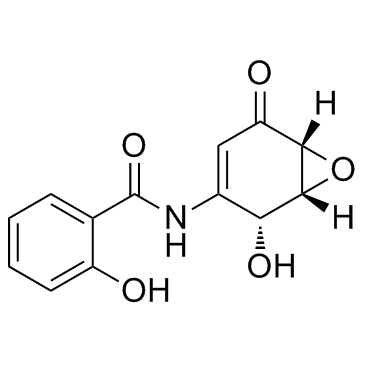
-
GC45266
(+)-Macrosphelide A
(+) - Le macrophelide A est un antibiotique macrolide.

-
GC40266
(+)-Praeruptorin A
(+) - La praeruptorine A est un constituant bioactif principal de Peucedanum praeruptorum (également connu sous le nom de Bai-Hua Qian Hu).

-
GC18749
(+)-Rugulosin
NSC 160880, NSC 249990, Rugulosin A
(+)-La rugulosine est une matière colorante cristalline de Penicillium rugulosum Thom.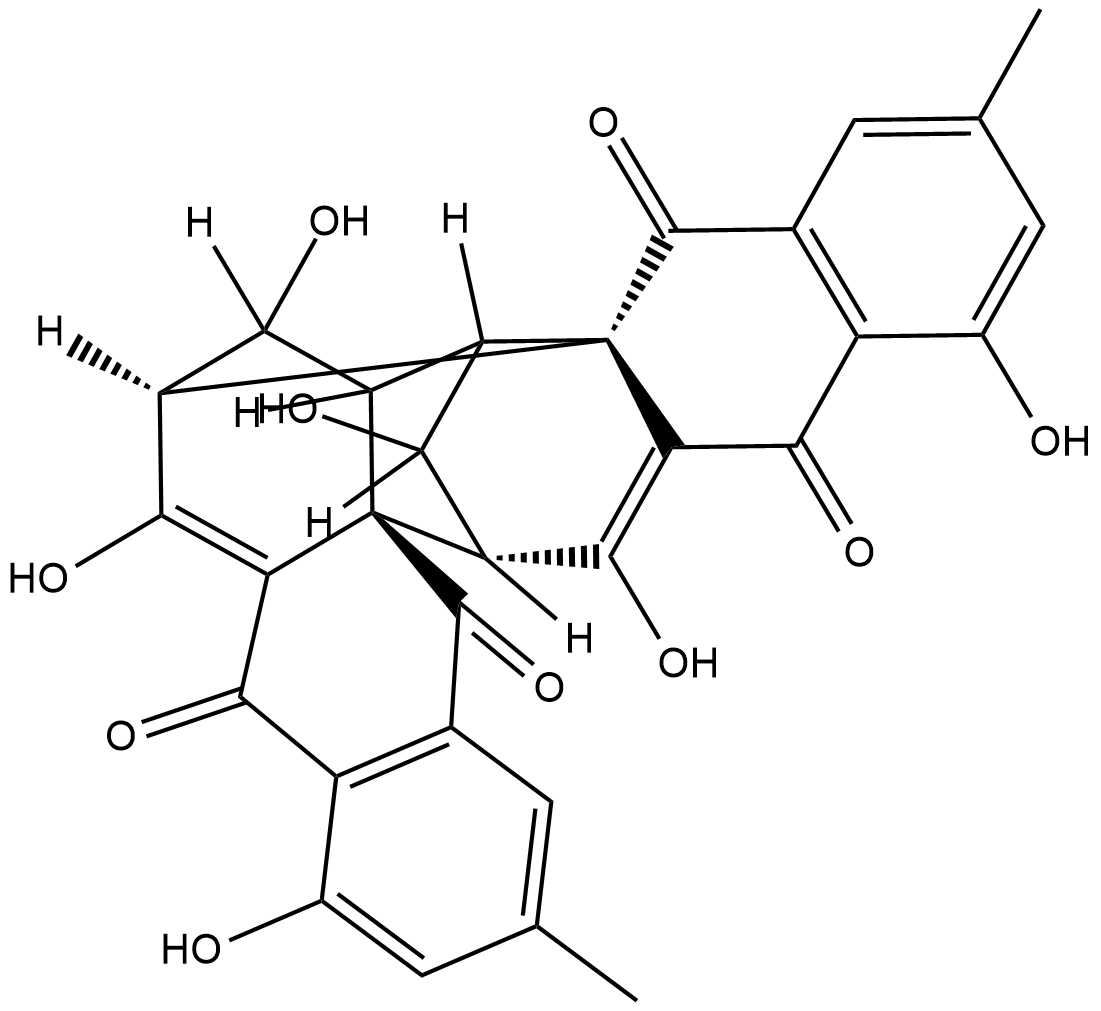
-
GC63969
(+)-Schisandrin B
(+)-Schisandrin B est un énantiomère de Schisandrin B.
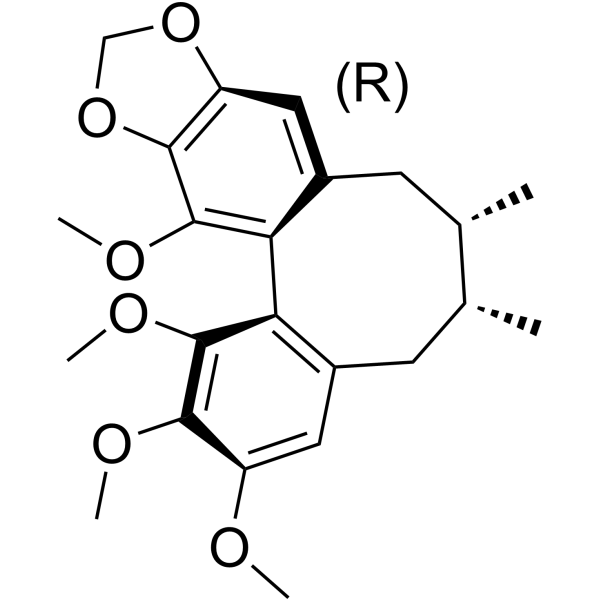
-
GC40264
(+)-Valencene
NSC 148969
(+)-Valencene is a sesquiterpene that has been found in C.

-
GC49502
(-)-β-Sesquiphellandrene
A sesquiterpene with antiviral and anticancer activities

-
GC32705
(-)-DHMEQ (Dehydroxymethylepoxyquinomicin)
Dehydroxymethylepoxyquinomicin
(-)-DHMEQ (Dehydroxymethylepoxyquinomicin) (Dehydroxymethylepoxyquinomicin) est un inhibiteur puissant, sélectif et irréversible de NF-κB qui se lie de manière covalente À un résidu de cystéine.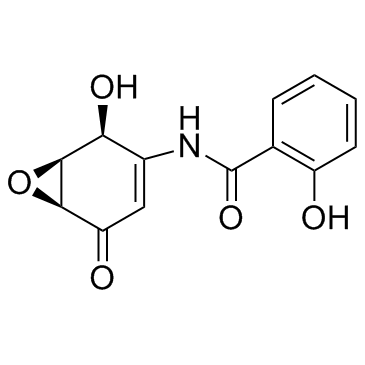
-
GC14049
(-)-Epigallocatechin gallate (EGCG)
EGCG
(-)-Epigallocatechin gallate (EGCG) est un polyphénol majeur du thé vert qui inhibe la prolifération cellulaire et induit l'apoptose.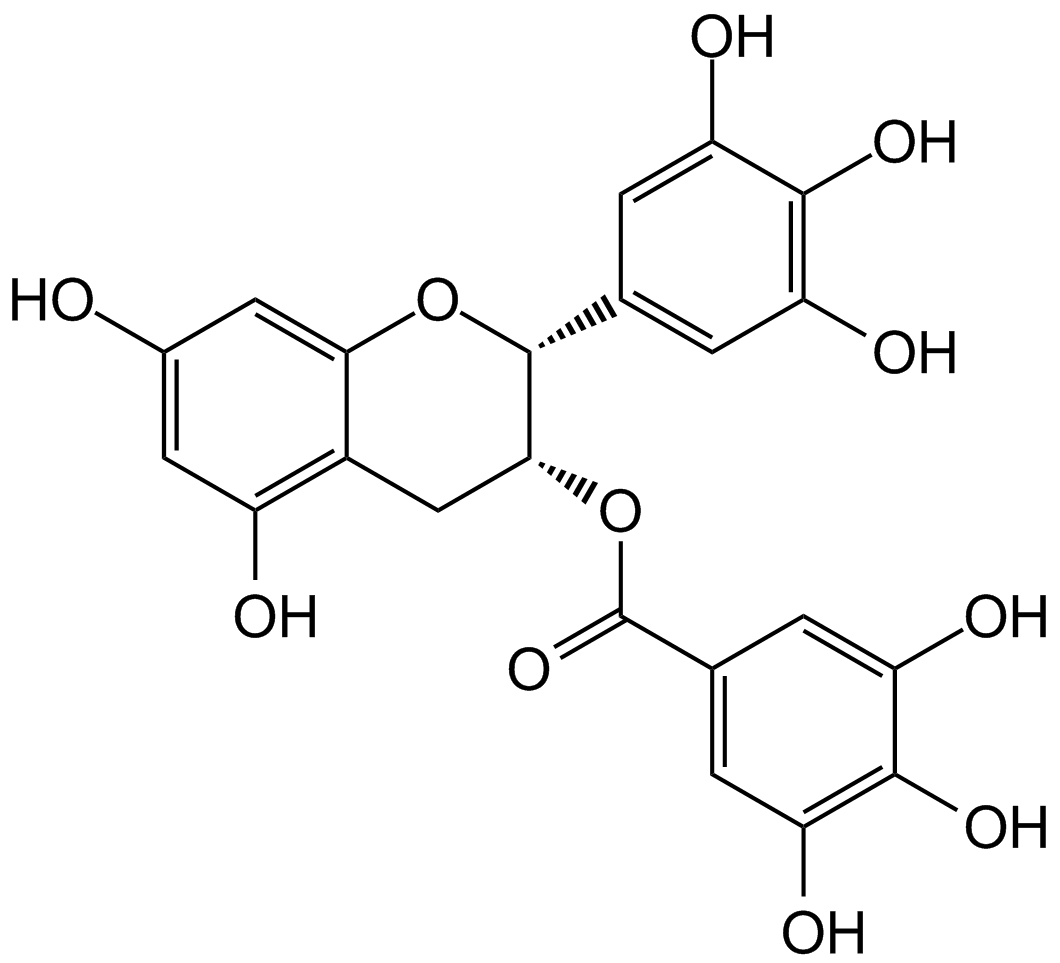
-
GC45248
(-)-FINO2
Le (-)-FINO2 est un puissant inducteur de la ferroptose. (-)-FINO2 inhibe l'activité de GPX4. (-)-FINO2 est un oxydant stable qui oxyde le fer ferreux et stable À différents niveaux de pH. (-)-FINO2 provoque une peroxydation lipidique généralisée.

-
GC46245
(-)-G-Lactone
A bicyclic γ-lactone

-
GC38316
(-)-Limonene
(±)-Dipentene, DL-Limonene, NSC 844, NSC 21446
Le (-)-limonène ((S)-(-)-limonène) est un monoterpène présent dans de nombreuses huiles d'aiguilles de pin et dans la térébenthine.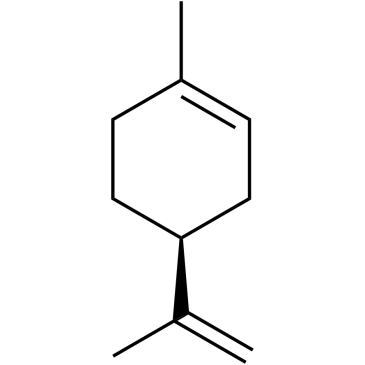
-
GC46247
(-)-Mycousnine
Mycousunin
A microbial metabolite with antibacterial and antifungal activities
-
GC45251
(-)-Neplanocin A
S-Adenosylhomocysteine (SAH) hydrolase catalyzes the reversible hydrolysis of SAH to adenosine and homocysteine.

-
GC45272
(-)-Rasfonin
TT-1
La (-)-Rasfonine est un métabolite secondaire fongique et inhibe les petites protéines G Ras. La (-)-Rasfonine induit l'apoptose, la nécrose et l'autophagie dans les cellules ACHN (une lignée cellulaire de carcinome rénal).
-
GC40803
(25S)-δ7-Dafachronic Acid
UPF1404
During unfavorable environmental conditions, C.
-
GC52442
(D)-PPA 1 (trifluoroacetate salt)
DPPA-1, NYSKPTDRQYHF
An inhibitor of the PD-1-PD-L1 protein-protein interaction
-
GC41700
(E)-2-(2-Chlorostyryl)-3,5,6-trimethylpyrazine
CSTMP
(E)-2-(2-Chlorostyryl)-3,5,6-trimethylpyrazine (CSTMP) is a stilbene derivative with antioxidant and anticancer activities.
-
GC61668
(E)-3,4-Dimethoxycinnamic acid
L'acide (E)-3,4-diméthoxycinnamique est l'isomère le moins actif de l'acide 3,4-diméthoxycinnamique.
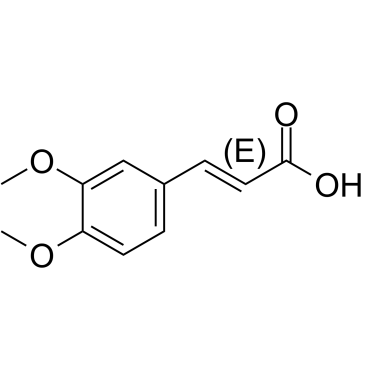
-
GC41702
(E)-5-(2-Bromovinyl)uracil
BVU
(E)-5-(2-Bromovinyl)uracil (BVU) is a pyrimidine base and an inactive metabolite of the antiviral agents sorivudine and (E)-5-(2-bromovinyl)-2'-deoxyuridine (BVDU) that may be regenerated to BVDU in vivo.
-
GC49003
(E)-Ajoene
NSC 614554
A disulfide with diverse biological activities
-
GC41703
(E)-C-HDMAPP (ammonium salt)
(E)5hydroxy4methylpent3enyl pyrophosphate
Synthetic and natural alkyl phosphates, also known as phosphoantigens, stimulate the proliferation of γδ-T lymphocytes.
-
GC39747
(E/Z)-GSK5182
(E/Z)-GSK5182 est un composé racémique des isomères (E)-GSK5182 et (Z)-GSK5182.
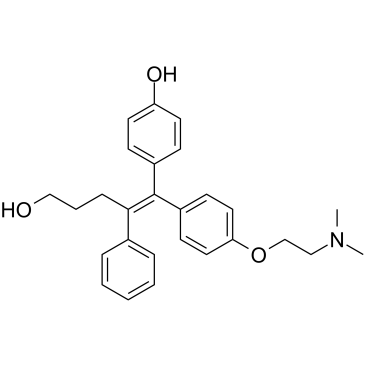
-
GC61564
(E/Z)-IT-603
(E/Z)-IT-603 est un mélange de E-IT-603 et de Z-IT-603 (IT-603).
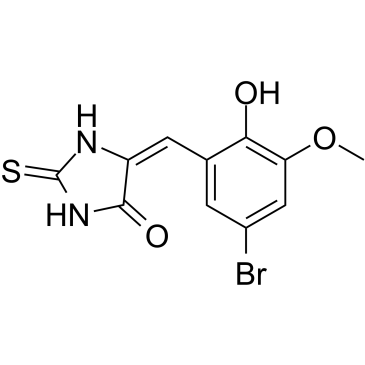
-
GC72216
(Gly14)-Humanin (human) (acetate)
(Gly14)-Humanin (human) (acetate) est un analogue de humanin, dans lequel le 14ème acide aminé, la sérine, est remplacé par la Glycine (Gly).

-
GC41721
(R)-α-Lipoic Acid
(R)-(+)-Lipoic Acid
(R)-α-Lipoic acid is the naturally occurring enantiomer of lipoic acid, a cyclic disulfide antioxidant.
-
GC49167
(R)-(+)-Trityl glycidyl ether
(R)-Trityl Glycidol
A synthetic precursor
-
GC13030
(R)-(-)-Ibuprofen
(-)-Ibuprofen
(R)-(-)-ibuprofène est l'énantiomère R de l'ibuprofène, inactif sur COX, inhibe l'activation de NF-κB; Le (R)-(-)-ibuprofène présente des effets anti-inflammatoires et antinociceptifs.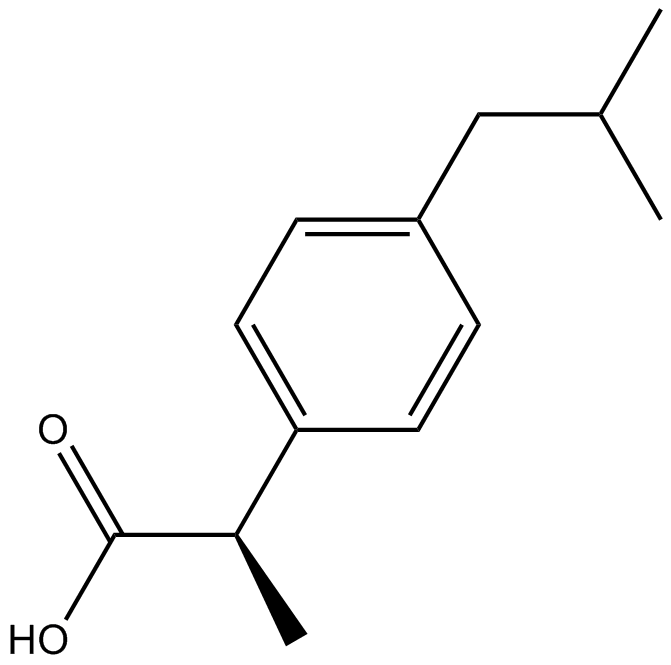
-
GC69823
(R)-(-)-Ibuprofen-d3
(R)-Ibuprofen-d3
(R)-(-)-Ibuprofen-d3 est le déutérium de (R)-(-)-Ibuprofen. (R)-(-)-Ibuprofen est l'isomère R de l'Ibuprofène, qui n'a pas d'effet sur la COX et peut inhiber l'activation du NF-κB ; (R)-(-)-Ibuprofen a des propriétés anti-inflammatoires et peut être utilisé dans les études sur le soulagement de la douleur.
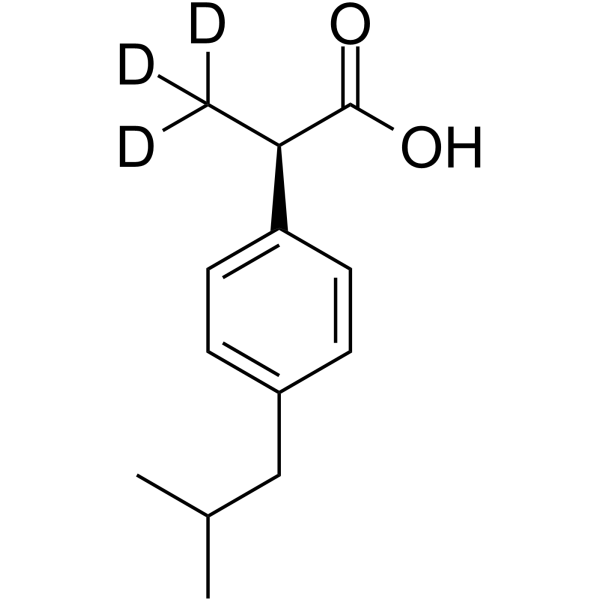
-
GC41620
(R)-(-)-Mellein
Ochracin
La (R)-(-)-melléine est un antibiotique isolé des fluides de culture de cet Aspergillus.
-
GC41712
(R)-3-hydroxy Myristic Acid
(R)-3-hydroxy Tetradecanoic Acid
Lipopolysaccharides (LPS) are components of the cell walls of Gram-negative bacteria.
-
GC65610
(R)-5-Hydroxy-1,7-diphenyl-3-heptanone
La (R)-5-hydroxy-1,7-diphényl-3-heptanone est un diarylheptanoÏde présent dans Alpinia officinarum.

-
GC65373
(R)-IL-17 modulator 4
Le modulateur (R)-IL-17 4 est la configuration R du modulateur IL-17 4.

-
GC12578
(R)-Lisofylline
(−)-Lisofylline,(R)-LSF
La (R)-lisofylline ((R)-lisophylline) est un énantiomère (R) du métabolite de la pentoxifylline aux propriétés anti-inflammatoires.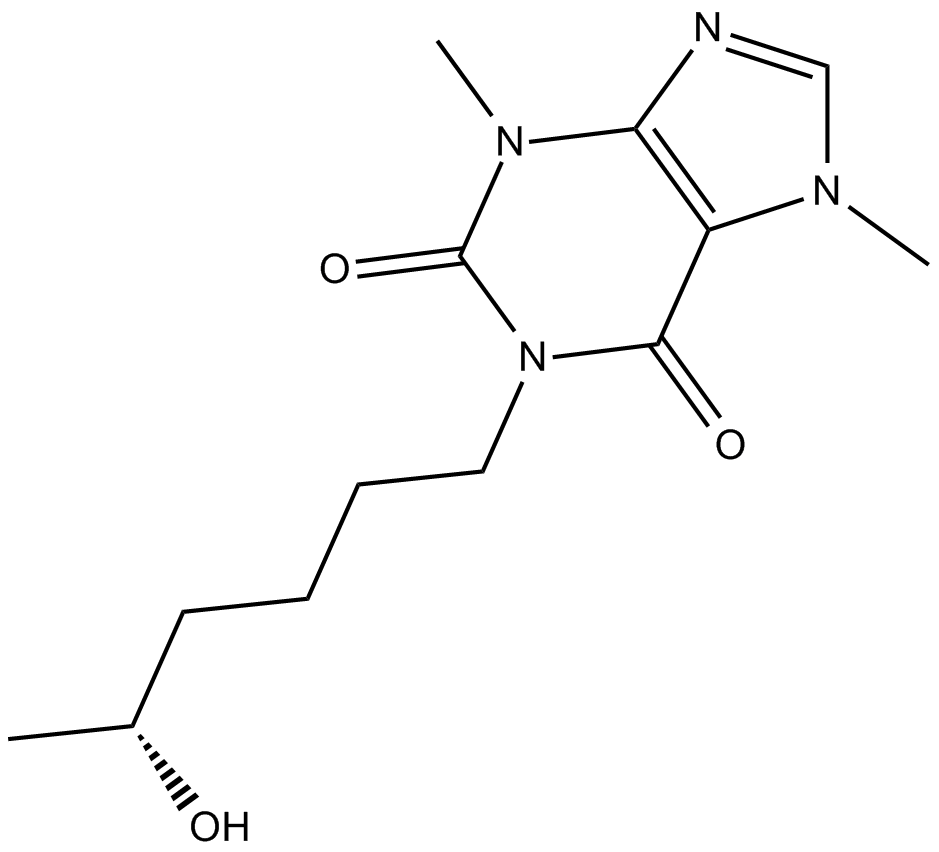
-
GC52185
(R,S)-Anatabine-d4
(±)-Anatabine-d4

-
GC71831
(Rac)-Anemonin
(Rac)-Anemonin Rac-Pulsatilla camphre est le diastéréoisomère de l’anémonine.

-
GC39321
(Rac)-Myrislignan
(Rac)-Myrislignan est le racé de Myrislignan.
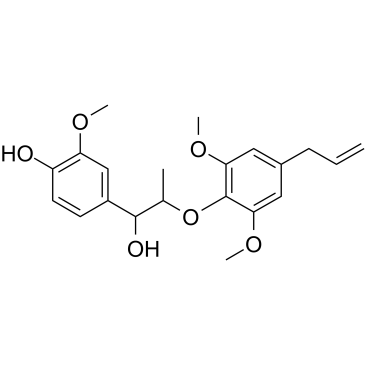
-
GC66334
(Rac)-PF-184 hydrate
L'hydrate de (Rac)-PF-184 est un puissant facteur inhibiteur-κB kinase 2 (IKK-2) avec une IC50 de 37 nM. L'hydrate de (Rac)-PF-184 a des effets anti-inflammatoires.
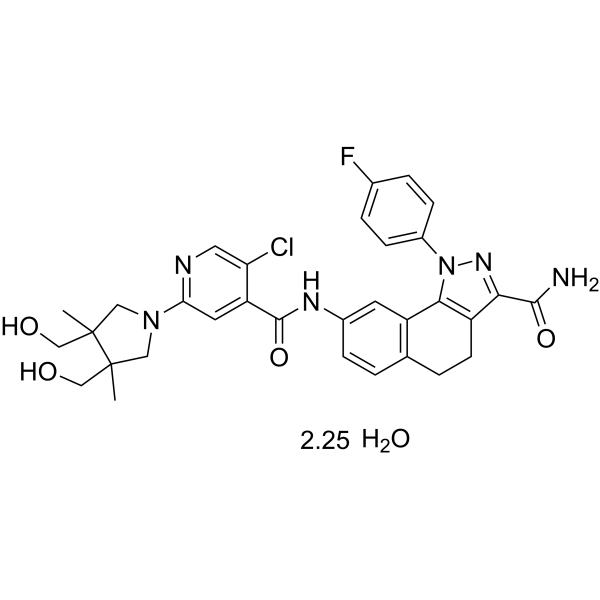
-
GC69799
(Rac)-ZLc-002
(Rac)-ZLc-002 est un inhibiteur de l'interaction entre la nNOS et la protéine d'ancrage de la NO synthase 1 (NOS1AP), qui inhibe la douleur inflammatoire et neuropathique induite par la chimiothérapie, et réduit synergiquement la viabilité des cellules tumorales avec le paclitaxel.
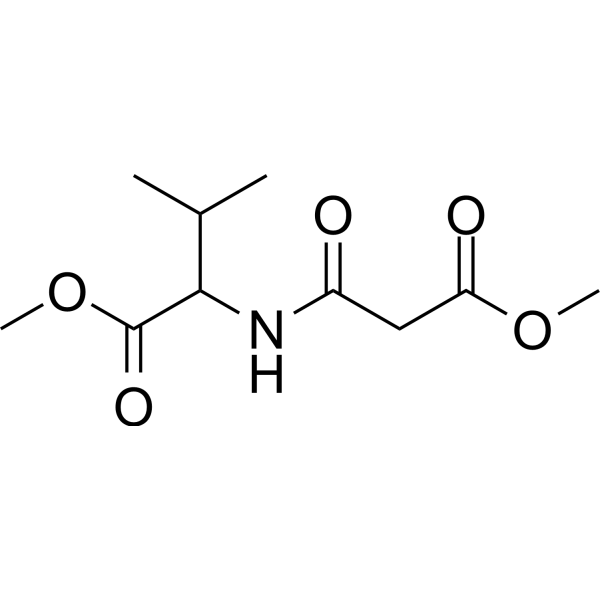
-
GC46345
(S)-(-)-Perillaldehyde
(–)-Perillaldehyde, L-Perillaldehyde, (S)-Perillaldehyde
Le (S)-(-)-périllaldéhyde est un composant majeur de l'huile essentielle contenue dans Perillae Herba.
-
GC49028
(S)-3-Thienylglycine
L-R-(3-Thienyl)glycine, L-α-3-Thienylglycine
A thienyl-containing amino acid


